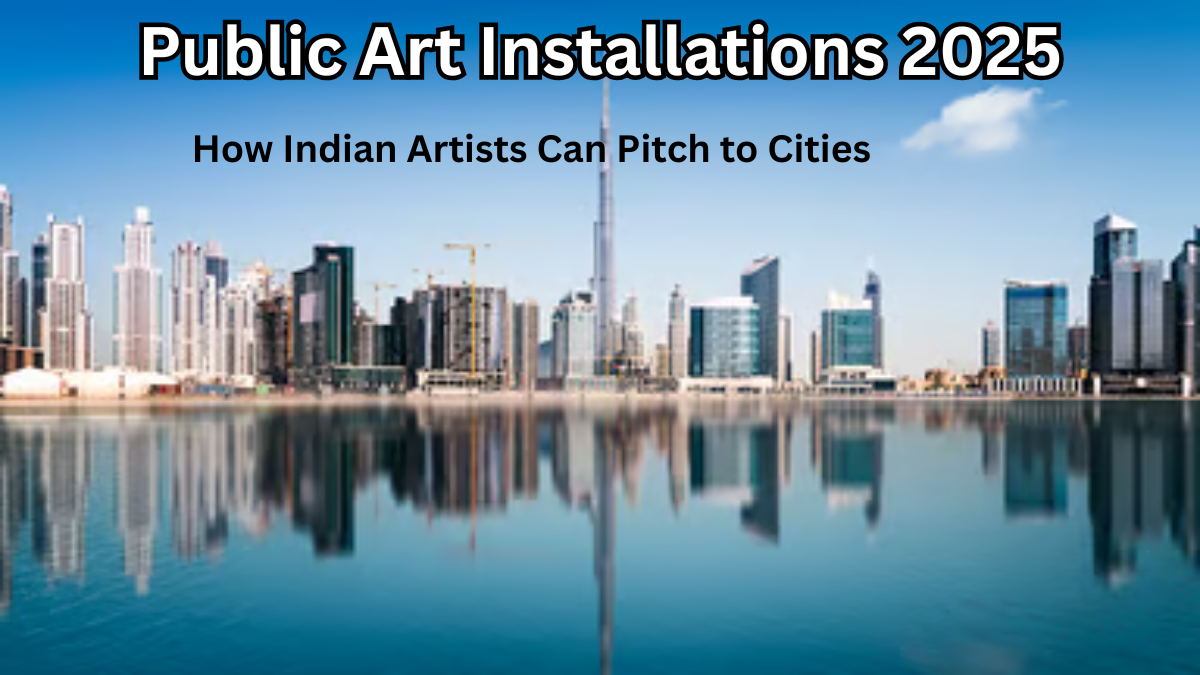Public spaces across India are changing — they’re becoming more vibrant, inclusive, and artistic. Public Art Installations in India 2025 are not just beautifying cities; they are sparking conversations, attracting tourists, and giving local artists the recognition they deserve.
If you’re an artist dreaming of seeing your work displayed in bustling city squares, parks, or metro stations, this guide will help you understand how to pitch for city projects and make your vision a reality.

Why Public Art Installations Matter
Public art is more than decoration — it reflects culture, heritage, and the voice of the community. In 2025, Indian cities are increasingly investing in city projects that use art to transform urban landscapes.
Key reasons why public art matters:
-
Cultural identity: Showcases local traditions, stories, and histories.
-
Community engagement: Creates spaces people connect with.
-
Tourism boost: Unique installations attract visitors and photographers.
-
Opportunities for artists: Provides exposure and potential career growth.
How Artists Can Pitch for Public Art Projects
Getting your idea approved for Public Art Installations in India 2025 requires a well-thought-out approach. Here’s how you can get started:
Research City Projects
Every city has different goals for its public spaces.
-
Check municipal websites and cultural departments for upcoming calls for artists.
-
Study past installations to understand the city’s preferences and themes.
Develop a Strong Concept
Your idea should:
-
Reflect the local community’s culture and aspirations.
-
Be innovative and feasible for large-scale installation.
-
Use sustainable and durable materials.
Prepare a Detailed Proposal
A good proposal includes:
-
Concept Note – A brief on your idea and its cultural relevance.
-
Design Visuals – Sketches, 3D models, or digital renders.
-
Budget Estimate – Materials, installation, and maintenance costs.
-
Impact Statement – How the installation benefits the city.
Network with the Right People
-
Attend art conclaves, exhibitions, and city development workshops.
-
Collaborate with NGOs, cultural organizations, and architects involved in urban projects.
Where to Find Opportunities
Here’s a quick overview of where artists can pitch:
City |
Key Departments to Approach |
Types of Installations in Demand |
|---|---|---|
Mumbai |
BMC & Mumbai Arts Commission |
Murals, interactive sculptures |
Delhi |
Delhi Urban Art Commission |
Heritage-inspired installations |
Bengaluru |
BBMP & Karnataka Tourism Board |
Tech-art and eco-friendly works |
Jaipur |
Rajasthan Tourism & Cultural Dept. |
Folk art-based installations |
Tips to Increase Your Chances
-
Stay aligned with the city’s theme – Whether it’s smart cities, sustainability, or cultural heritage.
-
Highlight long-term impact – Cities prefer installations that stay relevant for years.
-
Show community involvement – Projects that engage locals get more support.
FAQs
1. Who can apply for Public Art Installations in India 2025?
Any professional artist, art collective, or design firm can apply, provided they meet the eligibility criteria set by the city’s cultural department.
2. How much funding do cities provide for these projects?
Budgets vary by city and project size. On average, public art projects range from ₹5 lakhs to over ₹1 crore, depending on the scale.
3. Do I need prior experience to get selected?
While experience helps, first-time artists with unique, impactful ideas are often considered, especially if they collaborate with experienced teams.
4. Can digital artists also apply?
Yes. Many city projects in 2025 include digital and interactive art installations as part of smart city initiatives.
Public art is no longer just for global cities — Public Art Installations in India 2025 are giving local artists a platform to inspire millions. With the right concept, preparation, and connections, your work could be the next big addition to a city’s cultural landscape.
Click here to learn more